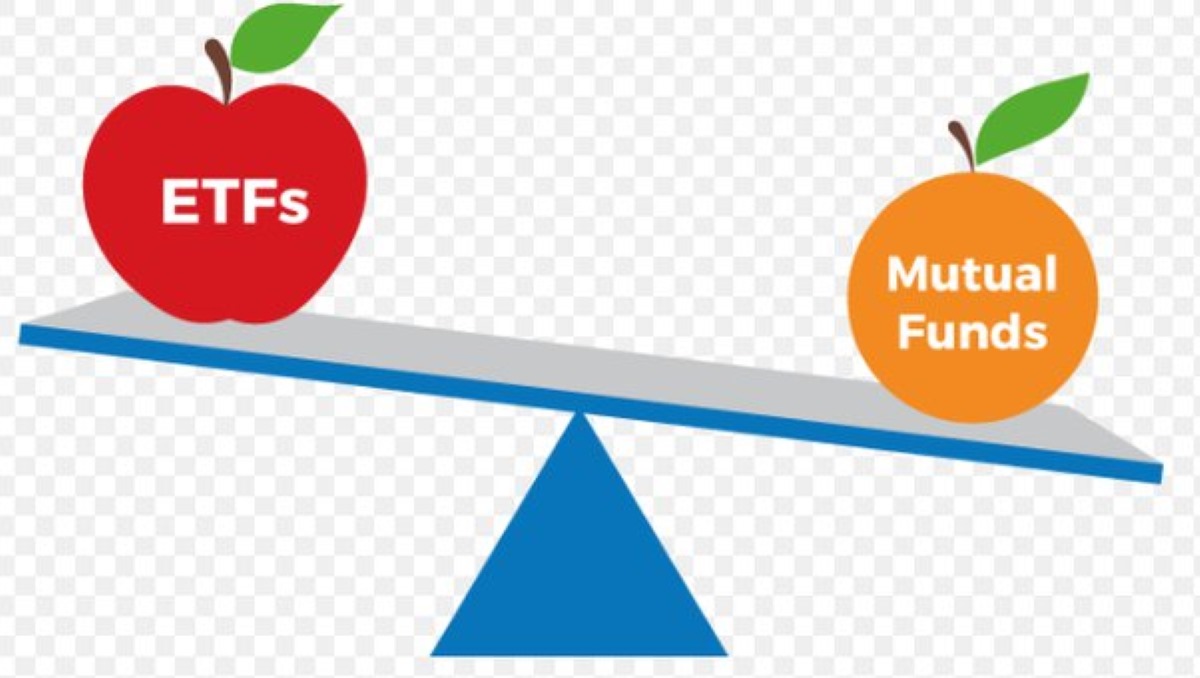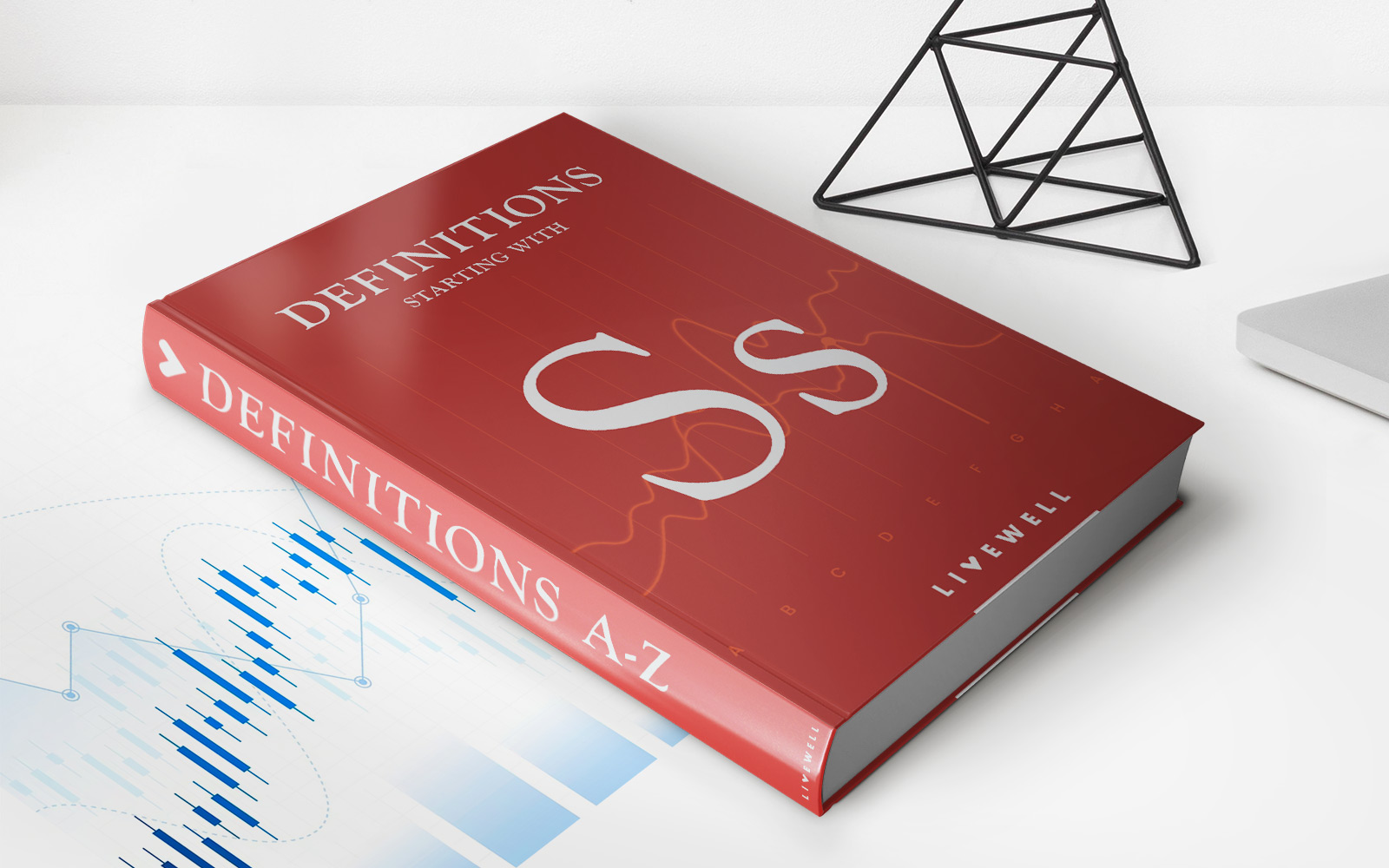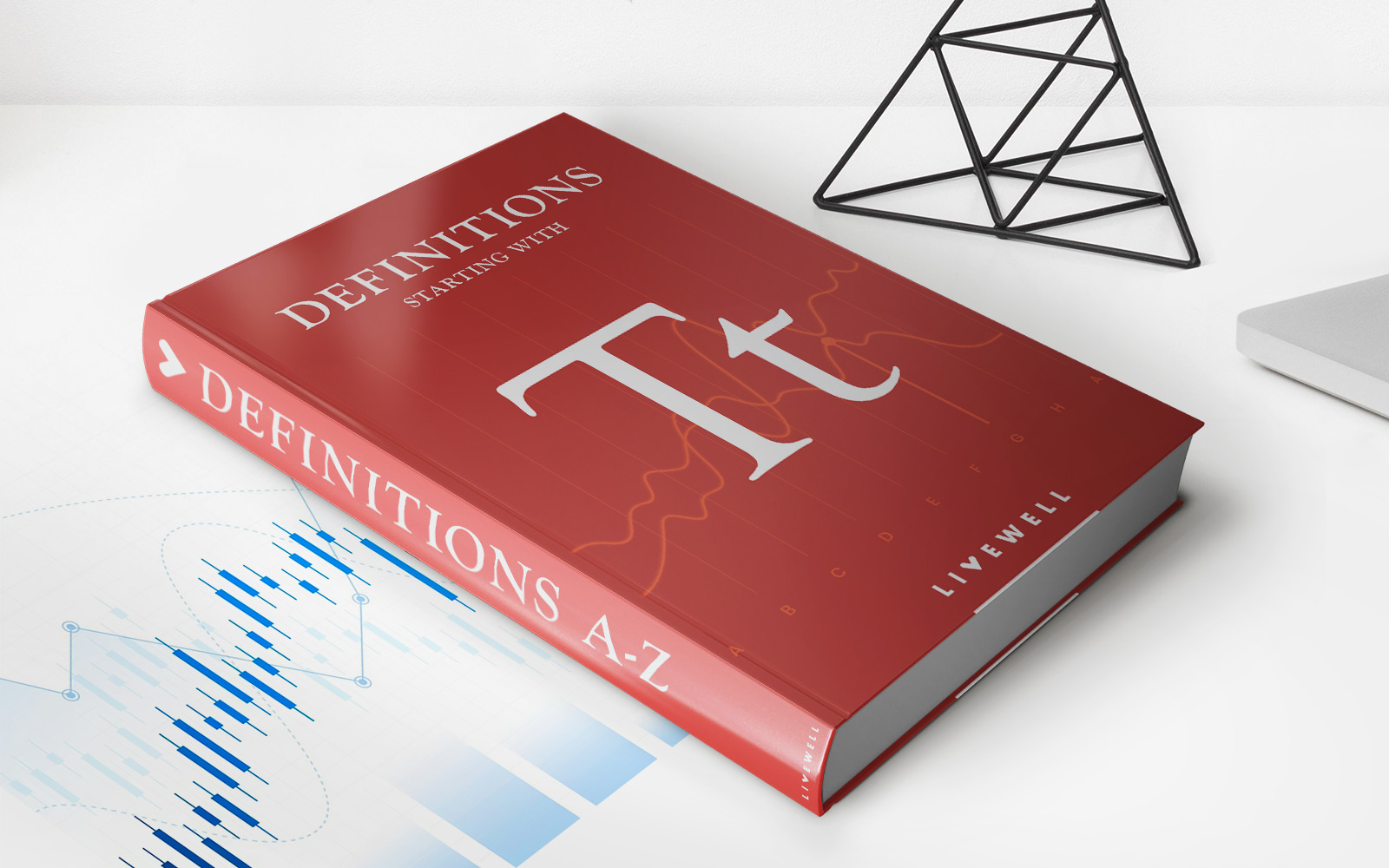

Finance
How To Evaluate Mutual Funds
Modified: December 30, 2023
Learn how to evaluate mutual funds in the finance industry. Discover key factors and tips for making informed investment decisions.
(Many of the links in this article redirect to a specific reviewed product. Your purchase of these products through affiliate links helps to generate commission for LiveWell, at no extra cost. Learn more)
Table of Contents
- Introduction
- What are mutual funds?
- Why evaluate mutual funds?
- Factors to consider when evaluating mutual funds
- Performance
- Expense Ratio
- Fund Manager’s Track Record
- Investment Strategy and Objectives
- Fund Size and Liquidity
- Risk Analysis
- Fees and Expenses
- Evaluating Historical Returns
- Evaluating Fund Fees and Expenses
- Evaluating Fund Volatility
- Evaluating Fund Ratings and Rankings
- Conclusion
Introduction
Welcome to the world of mutual funds! If you’re looking to grow your wealth and invest in the financial markets, mutual funds can be a valuable tool in your investment strategy. They offer a way to diversify your holdings, minimize risk, and potentially earn attractive returns.
But with so many mutual funds available in the market, how do you know which ones are worth investing in? This is where the process of evaluating mutual funds becomes crucial. By assessing various factors, you can determine which funds align with your investment goals and have the potential to outperform the market.
In this article, we will explore the key techniques for evaluating mutual funds. We will discuss the factors to consider, such as performance, expense ratio, fund manager’s track record, investment strategy and objectives, fund size and liquidity, risk analysis, fees, and historical returns. By understanding these aspects, you will be equipped with the knowledge to make well-informed investment decisions.
Before we delve into the evaluation process, let’s first understand what mutual funds are and why they are a popular investment choice.
What are mutual funds?
Mutual funds are investment vehicles that pool money from multiple investors to invest in a diversified portfolio of securities such as stocks, bonds, and other assets. These funds are managed by professional fund managers, who make investment decisions on behalf of the investors based on the fund’s investment objectives and strategies.
When you invest in a mutual fund, you buy shares or units of the fund. The value of these shares is determined by the net asset value (NAV) of the fund, which is calculated by dividing the total value of the fund’s assets by the number of outstanding shares.
Mutual funds are designed to offer investors a convenient and affordable way to access a diversified portfolio. By pooling money together, mutual funds provide small investors with the opportunity to invest in a wide range of securities that might otherwise be difficult or expensive to access individually.
One of the key benefits of investing in mutual funds is the diversification they offer. With a single investment, you gain exposure to a diversified range of assets, reducing the risk associated with individual securities. This diversification helps spread risk and can provide a more stable and consistent return compared to investing in individual stocks or bonds.
Furthermore, mutual funds are managed by experienced professionals who have expertise in analyzing and selecting securities. These fund managers have access to extensive research and resources, allowing them to make informed investment decisions to maximize returns and manage risk.
Mutual funds also offer liquidity, as investors can usually buy or sell their fund shares on any business day at the fund’s NAV. This provides investors with flexibility and the ability to easily access their investments when needed.
Overall, mutual funds provide individual investors with the opportunity to participate in the financial markets while benefiting from the expertise of professional fund managers and the advantages of diversification. However, it is essential to evaluate mutual funds carefully to ensure that they align with your investment goals and meet your expectations.
Why evaluate mutual funds?
Evaluating mutual funds is crucial for investors who want to make informed decisions and maximize their investment returns. Let’s explore the reasons why evaluating mutual funds is important:
Performance Assessment: Evaluating mutual funds allows you to assess their historical performance. By analyzing past performance data, you can gain insights into how the fund has performed in different market conditions. This information helps you gauge the fund’s ability to generate consistent returns and understand its potential for future performance.
Risk Management: Evaluating mutual funds helps you assess their risk levels. Different funds have varying levels of risk, depending on the types of securities they invest in, their investment strategies, and their overall portfolio composition. By evaluating a fund’s risk profile, you can determine whether it aligns with your risk tolerance and investment objectives.
Expense Management: Mutual funds come with expenses in the form of management fees, administrative costs, and other charges. By evaluating these expenses, you can determine if they are reasonable and justifiable based on the fund’s performance and the services provided. High expenses can eat into your investment returns, so it’s important to carefully evaluate these costs.
Fund Manager Expertise: Evaluating mutual funds allows you to assess the track record and expertise of the fund manager or management team. The fund manager plays a crucial role in making investment decisions, so it’s important to assess their experience, investment philosophy, and consistency in delivering solid results over time.
Alignment with Investment Goals: Every investor has unique investment goals. Evaluating mutual funds helps you determine if a particular fund aligns with your objectives. Whether you’re looking for long-term growth, income generation, or capital preservation, evaluating funds ensures that you choose ones that meet your specific needs.
Comparing Investment Options: There are numerous mutual funds available in the market, each with its own investment strategy and performance track record. Evaluating mutual funds allows you to compare different options side by side and select the ones that exhibit strong potential for growth and align with your investment preferences.
Diversification and Portfolio Construction: Evaluating mutual funds is essential for constructing a well-diversified investment portfolio. By evaluating funds across various asset classes, sectors, and geographical regions, you can build a portfolio that reduces concentration risk and enhances long-term returns.
By evaluating mutual funds thoroughly, you can make informed investment decisions based on objective criteria and increase the likelihood of achieving your financial goals. Whether you are a novice investor or an experienced one, evaluating mutual funds is an essential step in the investment process.
Factors to consider when evaluating mutual funds
When evaluating mutual funds, it’s important to consider a range of factors that can impact the fund’s performance, risk level, and suitability for your investment goals. Let’s explore the key factors to consider:
Performance: One of the most critical factors to evaluate is the fund’s historical performance. Assess how the fund has performed over different time periods and compare it with relevant market benchmarks. Look for consistent and competitive returns, considering both short-term and long-term performance.
Expense Ratio: The expense ratio reflects the annual operating expenses of the mutual fund, including management fees, administrative costs, and other charges. Lower expense ratios indicate that a greater percentage of your investment is being used for actual investment purposes. Evaluate the expense ratio to ensure it is reasonable and competitive compared to other funds in its category.
Fund Manager’s Track Record: The track record and experience of the fund manager or management team play a crucial role in the fund’s performance. Evaluate the manager’s past performance, consistency in delivering returns, and their investment approach. Look for fund managers with a proven track record of successfully navigating different market conditions.
Investment Strategy and Objectives: Each mutual fund has a specific investment strategy and set of objectives. Evaluate whether the fund’s investment strategy aligns with your investment goals, risk tolerance, and time horizon. Consider the fund’s asset allocation, the types of securities it invests in, and its investment style (such as growth, value, or income-oriented).
Fund Size and Liquidity: The size of a mutual fund can play a role in its performance and liquidity. Larger funds may have more resources to analyze investment opportunities and potentially access better deals. Additionally, evaluate the fund’s liquidity, which refers to how easily you can buy or sell shares without significantly impacting the fund’s market price.
Risk Analysis: Assessing the risk associated with a mutual fund is crucial to understand the potential downside and volatility. Evaluate the fund’s historical volatility, standard deviation, and performance during market downturns. Consider the fund’s investment holdings, concentration risk, and sensitivity to factors such as interest rate changes, economic conditions, and geopolitical events.
Fees and Expenses: In addition to the expense ratio, consider other fees and expenses associated with the mutual fund. These may include front-end or back-end loads (sales charges), redemption fees, and transaction fees. Understand the impact of these costs on your overall investment returns.
Evaluating these factors will provide valuable insights into the overall investment potential and risk profile of a mutual fund. Remember that it’s important to evaluate these factors in conjunction with your investment goals, risk tolerance, and overall investment strategy. By conducting a thorough evaluation, you can make more informed decisions and choose mutual funds that align with your financial objectives.
Performance
Assessing the performance of a mutual fund is crucial in evaluating its potential and determining its suitability for your investment portfolio. When evaluating performance, consider the following key aspects:
Return on Investment: The return on investment is a crucial measure of a mutual fund’s performance. Look at the fund’s historical returns over different time periods, such as 1 year, 3 years, 5 years, and 10 years. Evaluate the fund’s performance against appropriate benchmarks to assess how it has performed in relation to the market.
Consistency of Returns: Consistency in delivering returns is an important factor to consider. Look for funds that have a track record of consistently generating positive returns over various market conditions. Avoid funds that have experienced significant fluctuations or periods of underperformance.
Relative Performance: Evaluate how the mutual fund has performed relative to its peers in the same category. Compare its returns with other funds that have a similar investment objective, asset class, or strategy. It’s important to assess whether the fund has consistently outperformed its peers or has lagged behind.
Standard Deviation and Volatility: Assess the fund’s standard deviation and volatility to get a sense of its risk level. Standard deviation measures the degree of variation in a fund’s returns from its average return. A higher standard deviation indicates greater volatility. Consider how much risk you are willing to tolerate and select funds that align with your risk tolerance.
Downside Protection: Evaluate how the mutual fund has performed during market downturns or during periods of heightened volatility. Assess whether the fund has demonstrated the ability to limit losses or preserve capital during challenging market conditions. A fund that exhibits downside protection may provide more stability in your investment portfolio.
Risk-Adjusted Returns: Consider risk-adjusted returns to assess a fund’s performance relative to the level of risk it has taken. Popular risk-adjusted performance metrics include the Sharpe ratio and the Sortino ratio. These ratios measure the excess return generated by a fund compared to the risk-free rate or the downside risk of the fund, respectively. Higher risk-adjusted ratios indicate better risk-adjusted performance.
It’s important to note that past performance is not indicative of future results. While historical performance can provide insights into a mutual fund’s track record, it should not be the sole basis for investment decisions. Consider the fund’s investment strategy, management team, and market conditions when evaluating its performance.
Keep in mind that performance evaluation should be done within the context of your investment goals, risk tolerance, and overall investment strategy. Consider consulting with a financial advisor or conducting thorough research before making investment decisions based on performance data.
Expense Ratio
When evaluating mutual funds, one key factor to consider is the expense ratio. The expense ratio represents the annual operating expenses of a mutual fund as a percentage of its total assets. It includes management fees, administrative costs, and other charges incurred by the fund.
Expense ratios are important because they directly impact the returns you receive as an investor. Higher expense ratios can eat into your investment gains, potentially diminishing the overall performance of the fund. Therefore, it’s crucial to carefully evaluate the expense ratio before investing in a mutual fund.
Evaluating Expense Ratios:
1. Compare with Similar Funds: Compare the expense ratio of the mutual fund you are evaluating to similar funds in its category. Funds with similar investment objectives and strategies should ideally have similar expense ratios. Look for funds that offer a lower expense ratio compared to their peers, as this can potentially translate into higher net returns for investors.
2. Consider Investment Style: Expense ratios can vary depending on the investment style. For example, passively managed index funds tend to have lower expense ratios compared to actively managed funds. This is because index funds aim to replicate the performance of a specific market index, requiring less active management and research. On the other hand, actively managed funds have higher expense ratios due to the research and analysis involved in selecting securities.
3. Long-Term Impact: Over time, even seemingly small differences in expense ratios can have a significant impact on your investment returns. A lower expense ratio means more of your investment is working for you, rather than going towards covering expenses. Consider the impact of expense ratios on compound returns over the long term to assess the true cost of investing in a mutual fund.
4. Factor in Fund Performance: While a low expense ratio is desirable, it should not be the sole factor in evaluating a mutual fund. It’s important to consider the fund’s overall performance and track record in conjunction with the expense ratio. A fund with a slightly higher expense ratio may still be a worthwhile investment if it consistently outperforms its peers or benchmarks.
Beyond Expense Ratios:
While expense ratios provide a clear measure of the direct costs associated with investing in a mutual fund, it’s also crucial to consider the value and benefits provided by the fund. A fund with a slightly higher expense ratio may offer additional services, such as superior research capabilities, active portfolio management, or access to specialized investment strategies that can potentially result in higher returns.
Ultimately, it’s important to strike a balance between the expense ratio and the value proposition of the fund. Evaluate the fund’s performance, risk profile, and investment strategy alongside the expense ratio to make a well-rounded assessment of its potential for delivering returns.
By carefully evaluating and comparing expense ratios, you can make informed investment decisions and choose funds that offer a competitive expense structure while aligning with your investment goals.
Fund Manager’s Track Record
When evaluating mutual funds, one of the key factors to consider is the track record and experience of the fund manager or management team. The fund manager plays a crucial role in making investment decisions, and their expertise and performance can have a significant impact on the fund’s success. Here are some important aspects to assess when evaluating the fund manager’s track record:
Past Performance: Evaluate the fund manager’s past performance and their ability to deliver consistent returns over time. Look at their performance across various market cycles and assess whether they have been able to outperform the benchmarks or their peers. Consistency in generating positive returns is an important indicator of the fund manager’s skill and ability to navigate different market conditions.
Investment Philosophy and Style: Understand the fund manager’s investment philosophy and style. Some managers may adopt a value-oriented approach, focusing on undervalued stocks, while others may have a growth-oriented strategy, seeking companies with high growth potential. Evaluate whether their investment style aligns with your investment objectives and risk tolerance.
Experience and Tenure: Consider the fund manager’s experience in the industry and their tenure with the fund. Look for managers with substantial experience and a proven track record of success. A long tenure can indicate stability and commitment, as well as a deep understanding of the fund’s investment strategy and objectives.
Consistency in Investment Approach: Assess whether the fund manager has stuck to their investment approach and stayed true to their stated objectives over time. Consistency in strategy implementation can be an important factor in delivering reliable results. Frequent changes in investment style or significant shifts in the portfolio composition could be red flags indicating a lack of discipline or a lack of clarity in the investment process.
Communication and Transparency: Evaluate the fund manager’s communication style and transparency. Look for managers who provide clear and regular updates on the fund’s performance, investment strategy, and any changes in the portfolio. A manager who communicates effectively can help investors understand the fund’s investment approach and make informed decisions.
Team and Succession Planning: Consider the overall strength of the management team, as the fund manager’s performance is not only dependent on their individual skills but also on the support and collaboration of the team. Assess whether there is a well-defined succession plan in place, ensuring the continuity of a strong investment process even in the event of a manager’s departure.
It’s important to note that while the track record of the fund manager is an essential aspect to consider, past performance does not guarantee future success. The investment industry is dynamic, and performance can vary over time. Therefore, it’s crucial to evaluate the other factors mentioned above and make a comprehensive assessment of the fund manager’s ability to consistently deliver results.
By evaluating the fund manager’s track record, experience, investment style, and overall approach, you can gain insights into their ability to effectively manage the mutual fund and make well-informed investment decisions.
Investment Strategy and Objectives
When evaluating mutual funds, it is essential to understand the fund’s investment strategy and objectives. The investment strategy outlines how the fund aims to achieve its objectives and invests its assets. Here are key aspects to consider when assessing the investment strategy and objectives of a mutual fund:
Asset Allocation: Evaluate the fund’s asset allocation strategy, which determines the proportion of the portfolio invested in different asset classes such as stocks, bonds, cash, and alternative investments. Understand the fund’s approach to diversification and how it aims to balance risk and return through asset allocation decisions.
Sector and Geographic Exposure: Assess the fund’s sector and geographic exposure. Some funds may focus on specific sectors or regions, while others may adopt a more diversified approach. Evaluate the fund’s exposure to different sectors or countries and compare it to your own investment preferences and risk tolerance.
Investment Style: Consider the fund’s investment style, such as value, growth, or blend. Value funds seek to invest in stocks that are considered undervalued, while growth funds focus on companies with high growth potential. Blend funds combine elements of both value and growth investing. Choose a fund whose investment style complements your investment objectives.
Risk Management: Assess the fund’s risk management strategy. Look for funds that actively manage risk by implementing measures such as diversification, setting risk limits, and employing risk management tools. Evaluate the fund’s approach to managing various types of risks, including market risk, credit risk, and liquidity risk.
Investment Objective: Consider the fund’s stated investment objective, such as income generation, capital appreciation, or capital preservation. Ensure that the fund’s objective aligns with your own investment goals and risk tolerance. For example, if you are seeking steady income, a fund with a focus on dividend-paying stocks or fixed income securities may be more suitable for you.
Duration and Holding Period: Evaluate the fund’s duration or holding period, which reflects the average time until the securities in the portfolio mature or are sold. Funds with longer durations may be more suitable for investors with longer investment horizons, while shorter durations may be appropriate for those with shorter timeframes and a need for liquidity.
Ethical and Sustainable Investing: Consider whether the fund follows any specific ethical or sustainable investment criteria. Some funds may incorporate environmental, social, and governance (ESG) factors into their investment process. Evaluate if the fund’s approach to responsible investing aligns with your own values and preferences.
Understanding the investment strategy and objectives of a mutual fund is crucial in determining whether it is suitable for your investment goals, risk tolerance, and time horizon. By carefully evaluating these aspects, you can ensure that the fund’s strategy aligns with your investment preferences and enhances the chances of achieving your financial objectives.
Fund Size and Liquidity
When evaluating mutual funds, it’s important to consider the fund’s size and liquidity. These factors play a significant role in determining the fund’s potential for growth, its ability to handle large investments, and the ease with which you can buy or sell shares. Here are key points to consider when assessing a fund’s size and liquidity:
Fund Size: Evaluate the fund’s size by looking at its total assets under management (AUM). Fund size can have implications for both performance and management. Larger funds may benefit from economies of scale, allowing them to access more investment opportunities and potentially reducing certain expenses. However, extremely large funds may face challenges in maintaining their performance due to liquidity constraints and the difficulty of finding suitable investments in a market where large positions can be influential.
Liquidity: Liquidity refers to the ease with which you can buy or sell shares of a mutual fund. A liquid fund typically has a high trading volume and a tight bid-ask spread. This means that you can easily enter or exit the fund without significantly impacting the fund’s market price. Evaluate a fund’s liquidity to ensure it aligns with your investment needs. Keep in mind that smaller, niche funds or funds investing in illiquid assets may have lower liquidity compared to more mainstream funds.
Impact on Performance: Fund size and liquidity can have an impact on a fund’s performance. As a fund grows in size, it may face challenges in finding suitable investment opportunities without significantly moving the market. This can lead to reduced returns or difficulty in replicating the past performance. Additionally, if a fund receives significant inflows or outflows, it may need to adjust its holdings, potentially increasing transaction costs and affecting performance. Consider the potential impact of fund size and liquidity on a fund’s ability to achieve its investment objectives.
Flexibility and Investment Opportunities: Assess a fund’s size and liquidity in relation to its investment strategy. Different strategies require varying degrees of flexibility and access to investment opportunities. For example, a large-cap equity fund may require a larger asset base to invest in a broad range of large-cap stocks. On the other hand, a small-cap or specialized sector fund may be able to efficiently execute its strategy with a smaller asset base. Consider whether the fund’s size and liquidity align with its investment approach.
Diversification: Evaluate how fund size and liquidity may impact diversification. A larger fund may be able to offer a more diversified portfolio, reducing concentration risk. Additionally, larger funds may have greater access to alternative investments or hard-to-reach markets, expanding the diversification potential. Smaller funds, however, may have limitations in diversifying their holdings due to less available capital.
Investor Relations and Service: Consider how a fund’s size and liquidity may impact investor relations and customer service. Larger funds often have dedicated investor relations teams and a greater level of resources for client support. Conversely, smaller funds may offer a more personalized and hands-on approach, with potentially easier access to fund managers and decision-makers.
When assessing mutual funds, it’s important to strike a balance between fund size and liquidity. Consider your investment objectives, risk tolerance, and investment time horizon when evaluating these factors. By carefully evaluating a fund’s size and liquidity, you can choose funds that align with your investment preferences and provide a suitable investment experience.
Risk Analysis
When evaluating mutual funds, assessing the level of risk associated with an investment is crucial. Risk analysis helps you understand the potential downside and volatility of a mutual fund, allowing you to make informed decisions that align with your risk tolerance and investment objectives. Here are key points to consider when conducting a risk analysis:
Historical Volatility: Evaluate the fund’s historical volatility, which measures the degree of variation in the fund’s returns from its average return. Higher volatility indicates a greater potential for price fluctuations and a higher likelihood of experiencing significant ups and downs. Consider whether the fund’s historical volatility aligns with your risk tolerance and investment timeframe.
Standard Deviation and Beta: Assess the fund’s standard deviation and beta. Standard deviation is a statistical measure that quantifies the dispersion of returns around the average return. Beta measures the sensitivity of the fund’s returns to changes in the broader market. A higher beta implies a higher level of market risk. Consider whether the fund’s risk profile, as indicated by these measures, matches your risk tolerance.
Drawdowns: Examine the fund’s historical drawdowns, which reflect the peak-to-trough decline in value during a specific period. Evaluate the magnitude and duration of drawdowns to assess the fund’s ability to withstand market downturns. Funds with smaller drawdowns and a quicker recovery may be more suitable for risk-averse investors.
Correlation: Consider the correlation of the fund’s returns with broader market indices or other relevant benchmarks. Correlation measures how closely the fund’s returns move with changes in the market. A correlation of +1 indicates a perfect positive correlation, while a correlation of -1 implies a perfect negative correlation. Correlation impacts the diversification benefits of a fund in a broader portfolio. Look for funds with lower correlation to reduce the overall portfolio risk.
Risk Management Procedures: Evaluate the fund’s risk management procedures and whether they align with your expectations. Consider whether the fund implements risk management strategies such as diversification, risk measurement models, or hedging techniques to mitigate potential risks. Understanding a fund’s risk management practices can give you confidence in its ability to handle adverse market conditions.
Risk Factors: Assess the specific risk factors associated with the fund’s investment strategy and holdings. Different funds are exposed to various risks, such as market risk, credit risk, liquidity risk, interest rate risk, or geopolitical risk. Evaluate whether you are comfortable with and willing to accept the specific risks associated with the fund’s investment approach.
Scenario Analysis and Stress Testing: Some fund managers perform scenario analysis and stress testing to evaluate the impact of adverse market scenarios on the fund’s performance. Consider whether the fund has undergone such analysis and how it performed under different stress scenarios. This can provide insights into the fund’s resilience and ability to navigate challenging market conditions.
Understanding and assessing the potential risks associated with a mutual fund is vital for making informed investment decisions. By conducting a thorough risk analysis, you can choose funds that align with your risk tolerance, investment goals, and overall investment strategy.
Fees and Expenses
When evaluating mutual funds, one crucial aspect to consider is the fees and expenses associated with investing in the fund. Fees and expenses directly impact your investment returns and can vary significantly among different funds. Here are key points to consider when assessing the fees and expenses of a mutual fund:
Expense Ratio: The expense ratio is the most prominent fee charged by mutual funds. It represents the annual operating expenses as a percentage of the fund’s total assets. These expenses include management fees, administrative costs, legal fees, and other operational expenses. Lower expense ratios are generally preferred, as they allow a greater portion of your investment to remain invested and potentially generate returns.
Front-end and Back-end Loads: Some mutual funds charge sales fees known as loads. A front-end load is a fee charged when you purchase fund shares, typically deducted as a percentage of the investment amount. A back-end load, also known as a redemption fee or deferred sales charge, is charged when you sell your fund shares. Consider the impact of these loads on your investment returns, as they can erode your overall performance.
Transaction Fees: Certain funds may charge transaction fees when you buy or sell shares, in addition to any front-end or back-end loads. These fees are typically fixed-dollar amounts or percentages of the transaction value. Evaluate the impact of transaction fees on your investment returns, especially if you plan to engage in frequent trading.
Wrap Fees: Some mutual funds offer wrap accounts, which bundle investment management services and other administrative costs into a single fee. Wrap fees typically cover expenses such as investment advice, account administration, and trade execution. Understand the components and transparency of the wrap fee structure to determine if it provides value for the services offered.
Other Expenses: In addition to the expense ratio, be aware of any other potential expenses associated with investing in a mutual fund. These may include custodian fees, transfer agent fees, 12b-1 fees (which cover distribution and marketing expenses), and any additional charges mentioned in the fund’s prospectus. Consider the impact of these fees on your overall investment returns.
Fee Comparison: Compare the fees and expenses of different mutual funds within the same investment category. Look for funds that offer competitive fee structures while considering the fund’s performance and investment strategy. Be cautious of funds with significantly higher fees, as they may need to outperform their peers to justify those higher costs.
Value for Money: Assess the value provided by the mutual fund in relation to its fees and expenses. Consider the fund’s investment performance, risk management, the expertise of the fund manager, and the services and resources provided by the fund company. A slightly higher fee may be justifiable if the fund delivers consistent and superior returns or provides additional benefits such as access to specialized investment strategies or exceptional customer service.
Prospectus and Fee Disclosures: Review the mutual fund’s prospectus, which provides detailed information about the fees and expenses associated with investing in the fund. The prospectus contains key information that helps you understand the true cost of investing in the fund. Pay attention to any fee waivers or discounts, early withdrawal penalties, or fee breakpoints based on the investment amount.
Understanding the fees and expenses of a mutual fund is crucial in assessing the true cost and value of your investment. By evaluating these factors, you can make informed decisions and choose mutual funds that align with your investment objectives while optimizing your returns.
Evaluating Historical Returns
Assessing the historical returns of a mutual fund is an essential step in evaluating its performance and potential for future growth. By examining the fund’s historical returns, you can gain insights into its track record, consistency, and ability to generate positive investment results. Here are key points to consider when evaluating historical returns:
Return Measurement: Evaluate the fund’s historical returns over different time periods, such as 1 year, 3 years, 5 years, and 10 years. Consider the fund’s compound annual growth rate (CAGR) as a measure of its average annualized return over a specific period. Assess how the fund has performed during various market cycles and economic conditions.
Comparison to Benchmarks: Compare the fund’s historical returns to relevant benchmarks that represent similar asset classes or market indices. Benchmarks provide a point of reference to evaluate the fund’s performance in relation to the broader market. Assess whether the fund has consistently outperformed, underperformed, or closely tracked the benchmark over time.
Consistency of Returns: Evaluate the fund’s consistency in delivering returns. Look for funds that have demonstrated consistent positive returns over time, rather than those that have experienced significant volatility or dramatic swings. Consistency in performance can help gauge the fund manager’s ability to navigate different market conditions.
Long-Term Performance: Assess the fund’s long-term performance track record, particularly over 5-10 year periods. Analyze whether the fund has been able to deliver competitive returns over extended time horizons. Long-term performance helps you assess the fund’s ability to provide sustained returns and weather market fluctuations.
Investment Style Alignment: Consider how the fund’s historical returns align with its stated investment style. Evaluate whether the fund has historically performed well in the market conditions that favor its specific investment approach. For example, growth-oriented funds should have a track record of delivering strong performance during periods of market expansion and high-growth phases.
Relative Performance: Assess the fund’s relative performance compared to its peers in the same investment category. Compare the fund’s returns to other funds with similar investment objectives and strategies. Consider if the fund has consistently outperformed its peers or if it has lagged behind. Consistent outperformance can be an indication of skilled fund management.
Market Cycle Performance: Evaluate how the fund has performed during various market cycles. Consider both the fund’s performance during bull markets, when the overall market is rising, and bear markets, when the market is declining. Assess whether the fund demonstrates resilience and the ability to protect capital during market downturns.
Risk-Adjusted Returns: Consider the fund’s risk-adjusted returns to gain insights into its performance relative to the level of risk taken. Evaluate measures such as the Sharpe ratio or the Sortino ratio, which assess the fund’s returns adjusted for the volatility or downside risk. Higher risk-adjusted ratios indicate better risk-adjusted performance.
Keep in Mind: When evaluating historical returns, it’s essential to remember that past performance is not a guarantee of future results. Market conditions and the fund’s investment strategy may change, impacting its future performance. Historical returns should be evaluated in conjunction with other factors such as the fund’s investment philosophy, risk management practices, expense structure, and the expertise of the fund manager or management team.
By thoroughly evaluating a mutual fund’s historical returns, you can gain valuable insights into its performance, consistency, and ability to align with your investment goals. Consider historical returns as part of a comprehensive assessment of the fund’s overall potential as an investment.
Evaluating Fund Fees and Expenses
When evaluating mutual funds, one crucial aspect to consider is the fees and expenses associated with investing in the fund. The fees and expenses directly impact your investment returns and can vary significantly among different funds. Here are key points to consider when evaluating the fees and expenses of a mutual fund:
Expense Ratio: The expense ratio is the most prominent fee charged by mutual funds. It represents the annual operating expenses as a percentage of the fund’s total assets. These expenses include management fees, administrative costs, legal fees, and other operational expenses. Lower expense ratios are generally preferred as they allow a greater portion of your investment to remain invested and potentially generate returns.
Front-end and Back-end Loads: Some mutual funds charge sales fees known as loads. A front-end load is a fee charged when you purchase fund shares, typically deducted as a percentage of the investment amount. A back-end load, also known as a redemption fee or deferred sales charge, is charged when you sell your fund shares. Consider the impact of these loads on your investment returns as they can erode your overall performance.
Transaction Fees: Certain funds may charge transaction fees when you buy or sell shares, in addition to any front-end or back-end loads. These fees are typically fixed-dollar amounts or percentages of the transaction value. Evaluate the impact of transaction fees on your investment returns, especially if you plan to engage in frequent trading.
Management Fee: The management fee is the fee charged by the fund’s investment manager for managing the fund’s portfolio. It is expressed as a percentage of the fund’s assets under management. Evaluate whether the management fee is reasonable and competitive based on the fund’s investment strategy, performance track record, and the resources and expertise of the fund manager.
Account Maintenance Fees: Some funds may charge account maintenance or service fees, especially for smaller accounts. These fees cover administrative costs associated with managing the account, processing transactions, and providing client support. Assess these fees to ensure they are reasonable and justified based on the services provided by the fund.
Other Expenses: In addition to the expense ratio and sales loads, be aware of any other potential expenses associated with investing in a mutual fund. These may include custodian fees, transfer agent fees, 12b-1 fees (which cover distribution and marketing expenses), and any additional charges mentioned in the fund’s prospectus. Consider the overall impact of these fees on your investment returns.
Fee Transparency: Evaluate the fund’s transparency when it comes to its fees and expenses. Look for clear and comprehensive disclosure of fees in the fund’s prospectus and other official documents. Transparency ensures that you have a full understanding of the costs associated with investing in the fund and can make informed decisions.
Value for Money: Consider the value provided by the mutual fund in relation to its fees and expenses. Look beyond just the cost and assess the fund’s overall performance, risk management, investment strategy, and the services and resources provided by the fund company. A fund with slightly higher fees may still provide value if it consistently delivers superior returns or offers specialized investment opportunities.
Prospectus and Fee Disclosures: Review the mutual fund’s prospectus, which provides detailed information about the fees and expenses associated with investing in the fund. The prospectus contains key information that helps you understand the true cost of investing in the fund. Pay attention to any fee waivers or discounts, early withdrawal penalties, or fee breakpoints based on the investment amount.
Evaluating the fees and expenses of a mutual fund is crucial in assessing the true cost and value of your investment. By considering these factors, you can make informed decisions and choose funds that align with your investment goals while optimizing your returns.
Evaluating Fund Volatility
When evaluating mutual funds, assessing the level of volatility is important to understand the potential for fluctuations in investment returns. Volatility measures the degree of price variability or fluctuation of a fund’s returns over a given period. By evaluating fund volatility, you can assess the level of risk associated with the fund and determine its suitability for your investment goals. Here are key points to consider when evaluating fund volatility:
Standard Deviation: Standard deviation is a statistical measure that quantifies the dispersion of a fund’s returns from its average return. It serves as an indicator of the fund’s volatility. Higher standard deviation implies greater volatility and potential for larger price swings. Evaluate the standard deviation as compared to similar funds or benchmarks to gauge the fund’s relative volatility.
Historical Performance: Analyze the fund’s historical performance to evaluate the volatility. Assess how the fund has performed during different market phases, including market expansions and contractions. A fund that experiences excessive price swings during downturns may not be suitable for conservative investors who seek stability.
Beta: Beta measures the sensitivity of a fund’s returns to changes in the broader market. A beta of 1 indicates that the fund’s price moves in tandem with the market, while a beta greater than 1 implies the fund is more volatile than the market. Conversely, a beta less than 1 suggests that the fund is relatively less volatile compared to the market. Assess the fund’s beta to ascertain its volatility in relation to the overall market movement.
Sharpe and Sortino Ratios: Sharpe ratio and Sortino ratio are risk-adjusted performance measurements that assess a fund’s returns relative to volatility. The Sharpe ratio measures the fund’s excess return per unit of risk (standard deviation) compared to a risk-free rate. The Sortino ratio focuses on the fund’s downside volatility, considering only downside deviation from a target return. A higher Sharpe or Sortino ratio indicates better risk-adjusted performance.
Comparison to Peers: Compare the fund’s volatility to similar funds in the same investment category. Assess whether the fund has significantly higher or lower volatility than its peers. A fund’s volatility should align with your risk tolerance and investment objectives. Remember that funds with higher volatility also have the potential for higher returns.
Historical Drawdowns: Consider the fund’s historical drawdowns, which measure the decline in value from peak to trough during a specific period. Evaluate the magnitude and duration of drawdowns to assess the fund’s potential downside risk. Funds with smaller drawdowns may be more suitable for risk-averse investors.
Diversification Benefits: Assess how a fund’s volatility affects the diversification benefits it provides to your investment portfolio. Evaluate whether the fund’s returns are uncorrelated or have low correlation with your existing investments. Diversification can help reduce the overall portfolio volatility by combining assets with different risk and return characteristics.
Consider Investment Horizon: The investment horizon also influences the importance of volatility. Short-term investors may be more sensitive to daily or short-term fluctuations, while long-term investors may have a higher tolerance for volatility as they focus on the potential for higher returns over time.
Evaluating fund volatility requires a careful assessment of historical performance, standard deviation, beta, and risk-adjusted ratios. By understanding a fund’s volatility characteristics, you can align its risk profile with your risk appetite and investment goals.
Evaluating Fund Ratings and Rankings
When evaluating mutual funds, ratings and rankings can provide useful insights into a fund’s performance, risk-adjusted returns, and overall quality. Ratings and rankings are typically provided by independent research firms, financial publications, and rating agencies. While they can be valuable tools, it’s important to understand their limitations and consider several factors when evaluating them. Here are key points to consider when evaluating fund ratings and rankings:
Credibility of the Source: Consider the credibility and reputation of the entity providing the ratings or rankings. Look for reputable research firms, financial publications, or rating agencies that have a history of unbiased analysis and accurate assessments. Verify that the source employs rigorous methodologies and transparent criteria for evaluating funds.
Scope of Analysis: Evaluate the scope of analysis used in the ratings and rankings. Some rankings may focus solely on a fund’s past performance, while others take into account risk-adjusted returns, expense ratios, management team tenure, and other factors. Understand the specific criteria used and assess how well they align with your investment goals and preferences.
Consistency of Methodology: Assess whether the methodology used by the rating or ranking agency is consistent over time. Changes in methodology can significantly impact a fund’s rating or ranking and make historical comparisons less meaningful. Look for agencies that maintain consistent evaluation criteria to ensure reliable and comparable results.
Peer Group Comparison: Consider how a fund’s rating or ranking compares to other funds within its peer group. Assess whether the fund consistently ranks highly within its category or if its position fluctuates. This comparison helps you understand how the fund stacks up against its competitors and whether it consistently delivers superior performance.
Long-Term Performance: Look beyond short-term ratings or rankings and consider a fund’s long-term performance track record. Evaluate how the fund has performed over multiple market cycles and throughout various economic conditions. A fund with a strong long-term performance may be more desirable than one that only performs well in a specific period.
Consider Risk Factors: Ratings and rankings often focus on returns, but it’s important to consider risk factors as well. Assess how risk-adjusted metrics are incorporated into the analysis. A fund that consistently produces high returns but takes on excessive risk may not be suitable for all investors. Evaluate if the risk-return profile aligns with your risk tolerance and investment objectives.
Suitability for Your Goals: Consider how the ratings and rankings align with your specific investment goals. Different investors have different objectives, risk tolerances, and time horizons. A highly ranked fund may be suitable for some investors but may not align with your individual needs and preferences.
Use as a Tool, Not Sole Criterion: Utilize ratings and rankings as a tool for evaluating mutual funds, but not as the sole criterion for making investment decisions. Consider them as one piece of the puzzle alongside other factors such as fund characteristics, historical performance, fees and expenses, and qualitative aspects like the fund manager’s experience and investment strategy.
Past Performance Does Not Guarantee Future Results: Keep in mind that past performance, as indicated by ratings or rankings, is not a guarantee of future performance. Market conditions change, and a fund’s performance can fluctuate over time. Use the ratings and rankings as an additional resource for evaluating funds but always conduct due diligence and seek a comprehensive understanding of the fund’s investment approach and risk factors.
Evaluating fund ratings and rankings can provide valuable insights, but it’s important to approach them with a critical mindset. Consider the credibility of the source, the scope and consistency of the methodology, long-term performance, risk factors, and suitability to your individual investment goals. By incorporating these considerations, you can utilize ratings and rankings as part of a well-informed investment decision-making process.
Conclusion
When evaluating mutual funds, it’s crucial to consider a wide range of factors to ensure that you make well-informed investment decisions. By carefully assessing these factors, you can align your investments with your financial goals, risk tolerance, and investment strategy. Here’s a recap of the key factors to consider when evaluating mutual funds:
1. Performance: Evaluate the fund’s historical performance and how it has performed relative to relevant benchmarks and its peers. Assess consistency, long-term track record, and risk-adjusted returns.
2. Fees and Expenses: Analyze the fund’s expense ratio, sales loads, transaction fees, and other charges. Consider the overall value provided by the fund in relation to its fees.
3. Fund Manager’s Track Record: Assess the experience, past performance, and investment philosophy of the fund manager or management team.
4. Investment Strategy and Objectives: Evaluate the fund’s investment strategy, asset allocation, and alignment with your investment goals and risk tolerance.
5. Fund Size and Liquidity: Consider the fund’s size and liquidity, as larger funds may have advantages in accessing investment opportunities but could face challenges in maintaining performance.
6. Risk Analysis: Evaluate the fund’s historical volatility, standard deviation, beta, and risk management procedures.
7. Evaluating Historical Returns: Analyze the fund’s historical returns over different time periods and compare them to relevant benchmarks to assess consistent performance.
8. Evaluating Fund Fees and Expenses: Assess the expense ratio, sales loads, transaction fees, and other expenses to evaluate the true cost of investing in the fund.
9. Evaluating Fund Volatility: Consider factors such as standard deviation, beta, historical performance, and risk-adjusted returns to assess the level of volatility and potential risk of the fund.
10. Evaluating Fund Ratings and Rankings: Use ratings and rankings as part of your assessment, considering the credibility and consistency of the source, the methodology used, and the suitability of the fund to your individual investment goals.
Remember, no single factor should be the sole basis for making investment decisions. These factors should be considered collectively and in conjunction with your own investment goals, risk tolerance, and investment time horizon. Conduct thorough research, consult with financial professionals if needed, and carefully read the fund’s prospectus and official documents.
By carefully evaluating mutual funds, you can choose investments that align with your objectives, manage risk effectively, and have the potential to provide attractive returns over the long term. Regularly review and monitor your investments to ensure they continue to align with your changing financial circumstances and goals.
Ultimately, the evaluation process is essential for making informed investment decisions and empowering you to build a well-diversified and successful investment portfolio.














